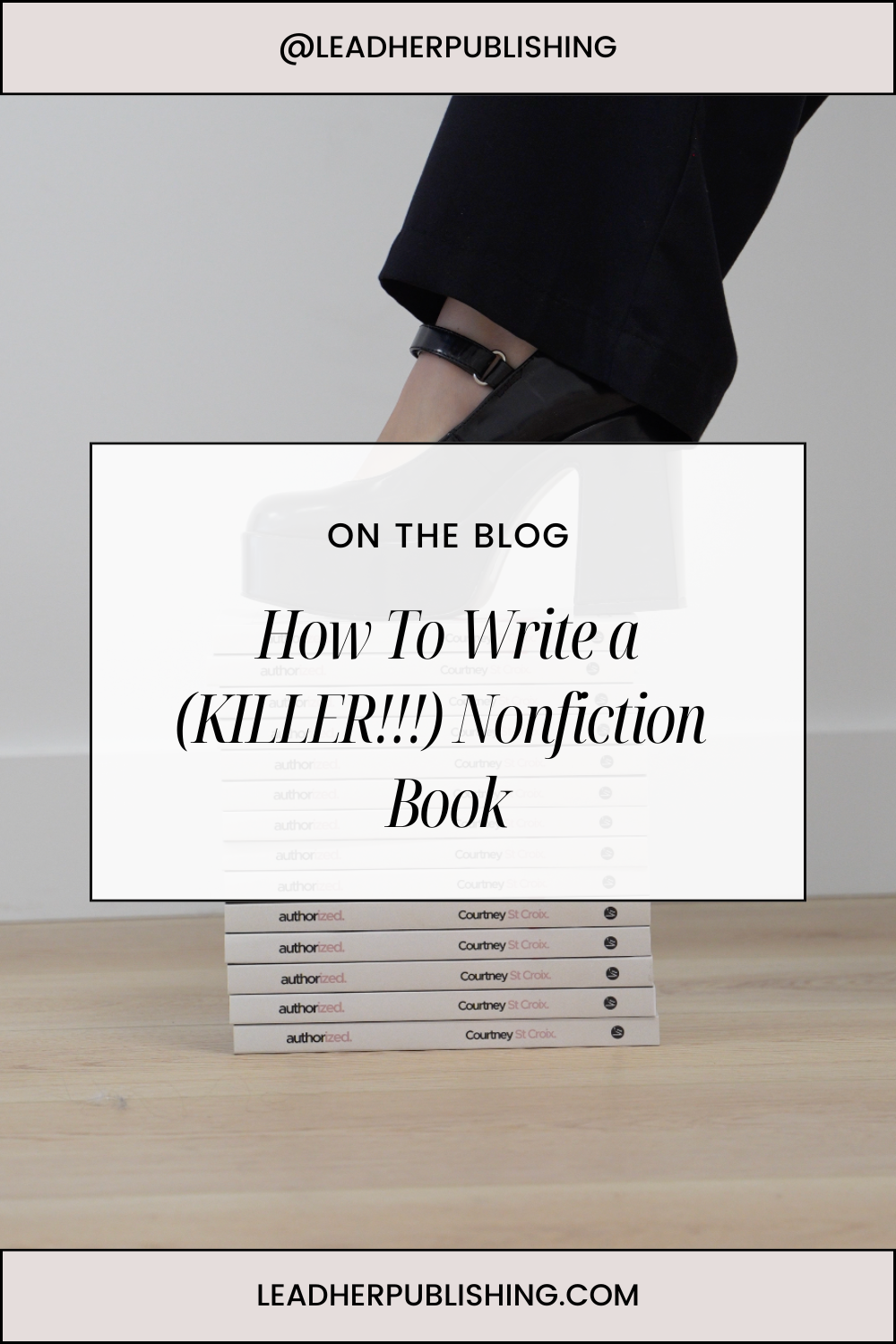How To Write a (KILLER) Nonfiction Book!
How To Write a (KILLER) Nonfiction Book!
So, you’ve decided to write a nonfiction book. First of all, congratulations! You’re about to embark on a journey that will not only establish you as an expert in your field but also make you the kind of person who can drop the phrase, “Well, in my book…” at dinner parties. HOW COOL ARE YOU RN?! 😎
But here’s the thing: writing a nonfiction book isn’t just about dumping all your knowledge onto the page and calling it a day. If you want to write a killer nonfiction book—a book that people can’t put down, a book that not only informs but also inspires—you’ve got to do more. You need to blend your expertise with your experience, and most importantly, you need to tell a story.
Step 1: Own Your Expertise (Like a Boss)
Let’s start with the obvious: your expertise. You’re writing this book because you know your stuff. Maybe you’re a top-notch business coach, a seasoned fitness trainer, or a personal development guru with a track record of transforming lives. Whatever your field, your expertise is the foundation of your book.
But here’s the catch—expertise alone isn’t enough to keep your readers hooked. We’ve all read those dry, textbook-style nonfiction books that felt more like a lecture than a conversation. Yawn.
Your job is to take your expertise and make it accessible, relatable, and yes, even fun. Don’t just tell your readers what to do—show them why it matters, how it works in real life, and what happens when they apply your wisdom. As Stephen King says, “The road to hell is paved with adverbs.” In other words, cut the fluff and get to the good stuff.
Step 2: Infuse Your Experience (You’re the Secret Sauce)
Now, let’s talk about experience. Your personal journey, your struggles, your wins, your facepalm moments—these are the ingredients that will turn your book from a how-to guide into a page-turner. Readers want to know how you did it. They want to see themselves in your story.
“You can’t use up creativity. The more you use, the more you have.” – Maya Angelou.
By weaving your personal experiences into your book, you give your readers a roadmap they can follow. You’re not just an expert in a vacuum; you’re someone who’s been in the trenches, someone who’s faced the same challenges they’re facing. This is where you connect with your audience on a deeper level. It’s where you turn theory into practice and make your message resonate.
Step 3: Tell a Damn Good Story
Okay, here’s where the magic happens. Storytelling isn’t just for novelists and screenwriters. It’s for everyone who wants to engage their audience, nonfiction writers included. A great story is what makes your readers keep turning the pages, long after they’ve absorbed all the tips and tricks you have to offer.
Here’s the thing—humans are wired for stories. We remember them, we relate to them, and we’re moved by them. When you tell a story in your book, whether it’s about a client you helped or a personal breakthrough you had, you’re not just conveying information—you’re creating an emotional connection.
Take it from Brené Brown, who’s basically the queen of storytelling in nonfiction. She says, “Maybe stories are just data with a soul.” Your expertise is the data, but your stories are the soul. Together, they create a powerful, unputdown-able book.
Step 4: Find Your Voice (It’s Your Superpower)
Every author has a unique voice, and that’s what makes your book stand out in a crowded market. Your voice is how you talk, how you write, how you connect with your readers. It’s the difference between sounding like a dry encyclopedia entry and sounding like a friend who’s sharing life-changing advice over coffee.
So, how do you find your voice? Simple: be yourself. Write like you talk. If you’re funny, be funny. If you’re straightforward, be straightforward. Your readers are picking up your book because they want you—not a robot reciting facts.
Step 5: Edit Like a Pro (Because First Drafts Are Always Messy)
Once you’ve got your expertise, experience, and storytelling down on the page, it’s time to polish that manuscript until it shines. Editing is where you refine your ideas, tighten your narrative, and make sure your message is crystal clear.
Don’t be afraid to cut what doesn’t serve the story or the reader. As Hemingway said, “The first draft of anything is shit.” So embrace the editing process. It’s where your book transforms from good to killer.
Ready to (FINALLYYYY!) Write Your Damn Book?
Now that you’ve got the blueprint for writing a killer nonfiction book, it’s time to get started. But if you’re still feeling a little stuck, don’t worry—I’ve got your back.
Join my Free 5-Day WRITE YOUR DAMN BOOK Challenge! It’s designed to help you kickstart your writing habit, find your voice, and finally get that book out of your head and onto the page.
Or, grab a copy of Authorized: How To Write + Self-Publish a Nonfiction Book on Amazon. This book is packed with tips, tools, and resources to guide you through every step of the process—from writing to self-publishing to marketing your book. It’s available now on Amazon.
Writing a nonfiction book isn’t just about sharing what you know—it’s about connecting with your readers, telling a story, and leaving a lasting impact. By blending your expertise with your experience and storytelling, you’ll create a book that’s not only informative but also unforgettable. So, what are you waiting for? It’s time to write your damn book and show the world what you’ve got!



